
“Mariupol Maternity Hospital Airstrike” © Evgeniy Maloletka, Associated Press. World Press Photo of the Year.
“Iryna Kalinina (32), an injured pregnant woman, is carried from a maternity hospital that was damaged during a Russian airstrike in Mariupol, Ukraine, on 9 March 2022. Her baby, named Miron (after the word for ‘peace’) was stillborn, and half an hour later Iryna died as well. An OSCE report concluded the hospital was deliberately targeted by Russia, resulting in three deaths and some 17 injuries.
When Russian forces invaded Ukraine on 24 February 2022, they immediately targeted the strategically important port of Mariupol on the Sea of Azov. By 20 May, Russia gained full control of the city, which had been devastated by shelling, and tens of thousands of civilians had fled or been killed. Maloletka was one of the very few photographers documenting events in Mariupol at that time. The jury felt his story communicated the horror of the war for civilians; they praised the photographer’s resilience while working under immense pressure and imminent threat.”
The World Press Photo Awards, the world’s premier contest honoring photojournalism, has announced its winners. Ukrainian war photographer Evgeniy Maloletka‘s striking image of an injured pregnant woman in Mariupol was named 2023 World Press Photo of Year, beating the work of thousands of photographers. Maloletka has been covering the war in his home country since 2014, when Russia annexed Crimea. He arrived in Mariupol just hours before Russia began bombarding the city, and spent 20 days living with paramedics in the basement of a hospital.
His image of this woman, who later died of her injuries, was rewarded by the expert jury for capturing “the absurdity and horror of war.” It’s the jury’s hope that by honoring this photograph and giving it wider visibility that more people will acknowledge the unspeakable realities of this conflict.
Acclaimed photojournalist Mads Nissen won World Press Photo Story of the Year for his unflinching look at what happens in the aftermath of war. Following the 2021 withdrawal of U.S. and allied forces from Afghanistan, the Taliban returned to power. Nissen’s work shows what it is like for people living in the country under this regime. From teenagers forced to sell organs to women and children camping outside a bakery in hopes of receiving a meal, the photographs are a reminder that a “victory” in war does not always bring the change one hopes for and a reminder that when the international spotlight fades, real people are still trying to survive.
“My hope with this work is more than anything to create not just awareness, but engagement with the millions of Afghans who are desperately in need of food and humanitarian aid right now,” shares the photographer.
Moving out of the war zone, another major topic for the winners of the 2023 World Press Photo Awards is climate change. The global winners of the Long-Term Project Award, Anush Babajanyan, and the Open Format Award, Mohamed Mahdy, both tackle the issue in their own way. Babajanyan sheds light on water shortages in Central Asia, while Mahdy’s web-based project looks at the effects of rising tides in an Egyptian fishing village. While these stories take place far from each other, it’s interesting to see the common threads that climate change is having on our planet.
In addition to the global winners, the 2023 World Photo Awards also revealed the regional winners in all categories. We’ve curated a selection of the winning images and stories in order to give a comprehensive look at photojournalism around the world.
“Millions of people around the world will look at these photos and see death, despair, loss, and crisis,” shares Joumana El Zein Khoury, executive director of the World Press Photo Foundation. “My wish is that they also see what I see. The hope that through documentation there is a chance of justice and a better future, through remembering we honor what is lost, and through the courage and dedication of these photographers we are inspired.
“By highlighting these global winners, we hope to help people understand the world we all share a little bit more. I find myself thinking about how the people in these photos are not so much different from myself, bringing me to care more about what is happening to them. That is the indispensable benefit of photojournalism and documentary photography that I hope everyone who views these stories will also appreciate.”
The overall winners of the 2023 World Press Photo Awards have been revealed.
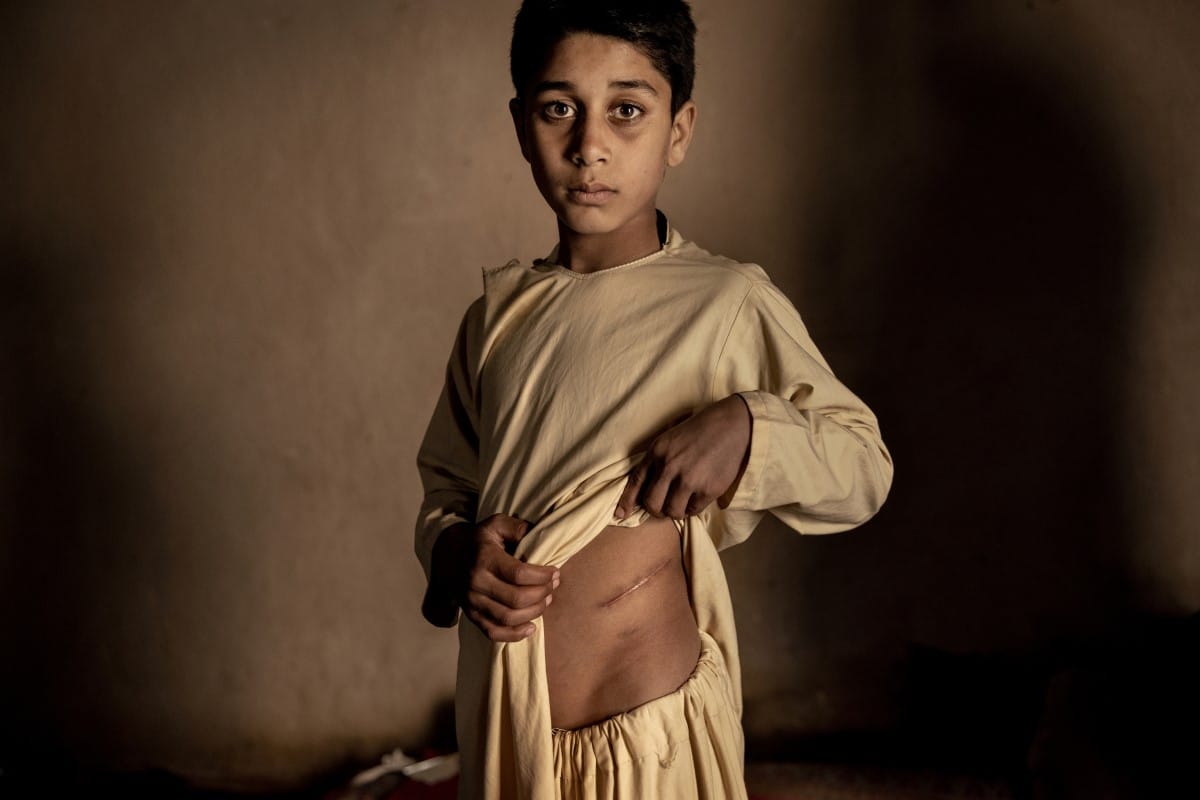
“The Price of Peace in Afghanistan” © Mads Nissen, Politiken/Panos Pictures. World Press Photo Story of the Year.
“Unable to afford food for the family, the parents of Khalil Ahmad (15) decided to sell his kidney for US$3,500. The lack of jobs and the threat of starvation has led to a dramatic increase in the illegal organ trade. After the withdrawal of US and allied forces from Afghanistan in August 2021, the Taliban returned to power. In response, other nations stopped providing foreign aid and froze billions of dollars of government reserves deposited abroad. Intense droughts in 2022 exacerbated the economic crisis; currently half of the country’s population do not have enough to eat and over a million children are severely malnourished according to the UN. This story captures the many difficulties Afghan people face in their daily lives.”
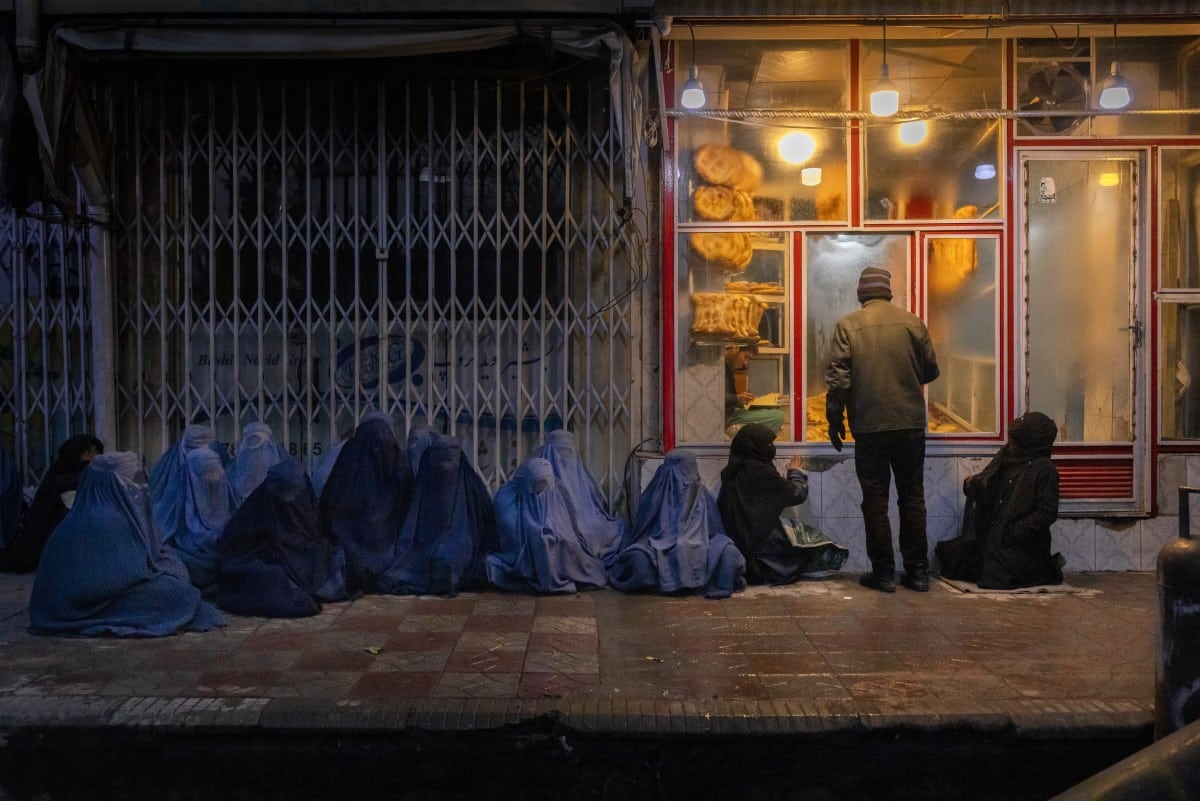
“The Price of Peace in Afghanistan” © Mads Nissen, Politiken/Panos Pictures. World Press Photo Story of the Year.
“Woman and children beg for food outside a bakery in central Kabul. Before the Taliban took power in august 2021, at most a few women were sitting here begging, but as the months passes, desperation increases, and more and more people are now relying on the compassion of other poor people.”
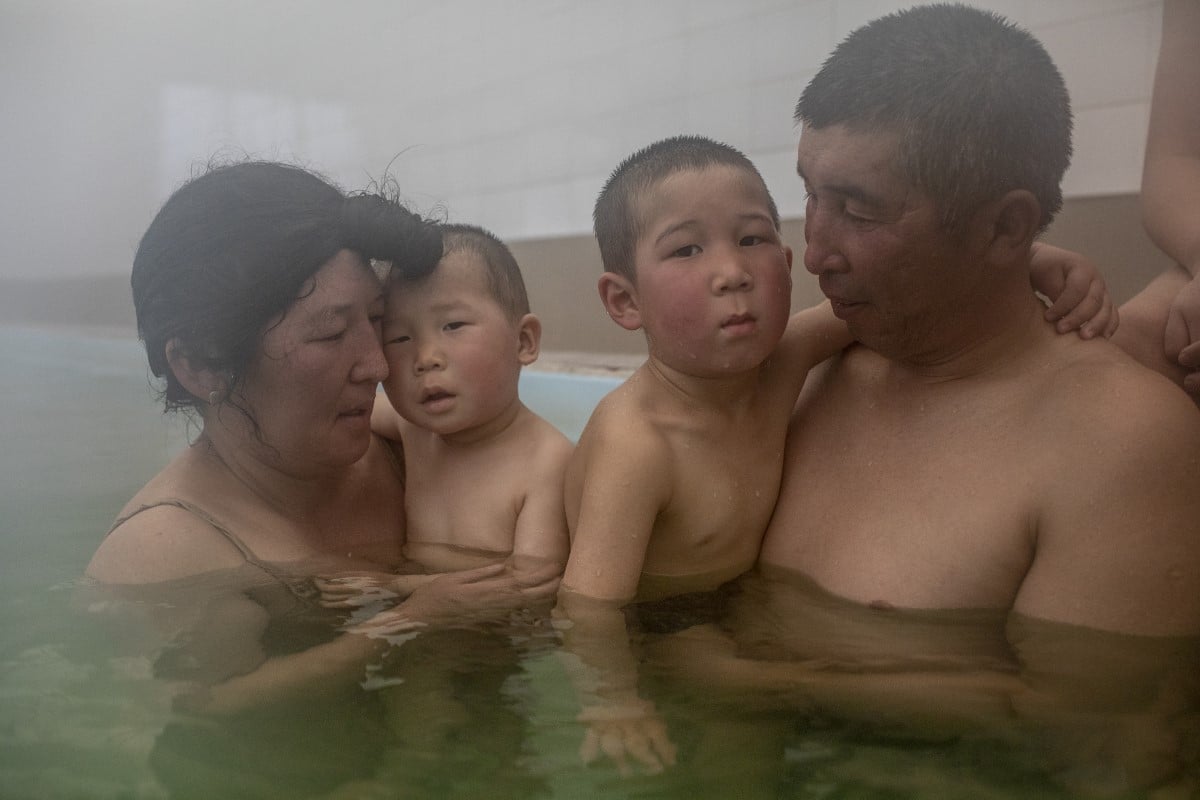
“Battered Waters” © Anush Babajanyan, VII Photo/National Geographic Society. World Press Photo Long-Term Project Award.
“Jaynagul Brjieva and her family enjoy an outing to a hot spring in Kaji-Say, Kyrgyzstan, on 9 March 2021. The waters are thought by some to have healing properties.
Four landlocked Central Asian countries are struggling with the climate crisis and lack of coordination over the water supplies they share. Tajikistan and Kyrgyzstan, upstream on the Syr Darya and Amu Darya rivers, need extra energy in winter. Downstream, Uzbekistan and Kazakhstan need water in summer for agriculture. Historically, the countries seasonally traded fossil-fuel energy for water released from upstream dams, but since the fall of the USSR and the rise of privatized industries, this system has become imbalanced. Unsustainable use of water and recent intense droughts compound the challenges.”

“Battered Waters” © Anush Babajanyan, VII Photo/National Geographic Society. World Press Photo Long-Term Project Award.
“Women visit a hot spring that has emerged from the dried bed of the Aral Sea, near Akespe village, Kazakhstan, on 27 August 2019. Once the world’s fourth-largest lake, the Aral Sea has lost 90 percent of its content since river water has been diverted.”
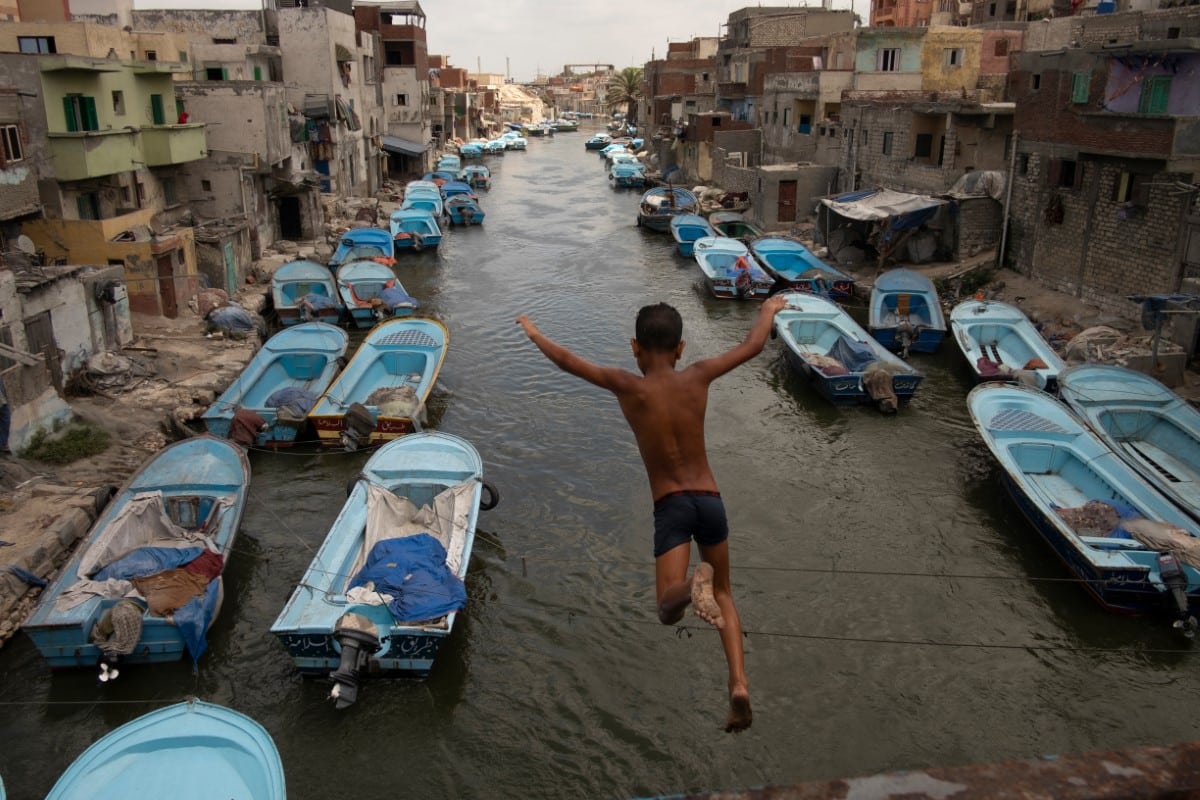
“Here, The Doors Don’t Know Me” © Mohamed Mahdy. World Press Photo Open Format Awards.
“This web-based project explores the effects of rising seas on the local community in Al Max, a fishing village situated along the Mahmoudiyah canal in Alexandria, Egypt. For generations, its residents have lived and worked on the canal that leads to the Mediterranean Sea. In 2020, the Egyptian government began evicting parts of Al Max and relocating people to housing several kilometers away from the canals, not only demolishing homes, but also endangering the collective memories and local culture embedded in the neighborhood. The stories featured here speak to the precarity of people everywhere striving for recognition amid global economic and environmental upheaval.
People of the Al Max community speak of love letters or last words found in bottles that would wash on to their shores. For this project, Mohamed Mahdy encouraged residents to write their own letters, building an archive of private memories for future generations. Visitors to the website are also encouraged to send their letters to the residents of Al Max, opening a channel of communication to the world. Utilizing found imagery and the artist’s own photography, Mahdy’s project presents an elegy to a communal way of life on the cusp of disappearing.”
In addition, regional winners from around the world were also announced.
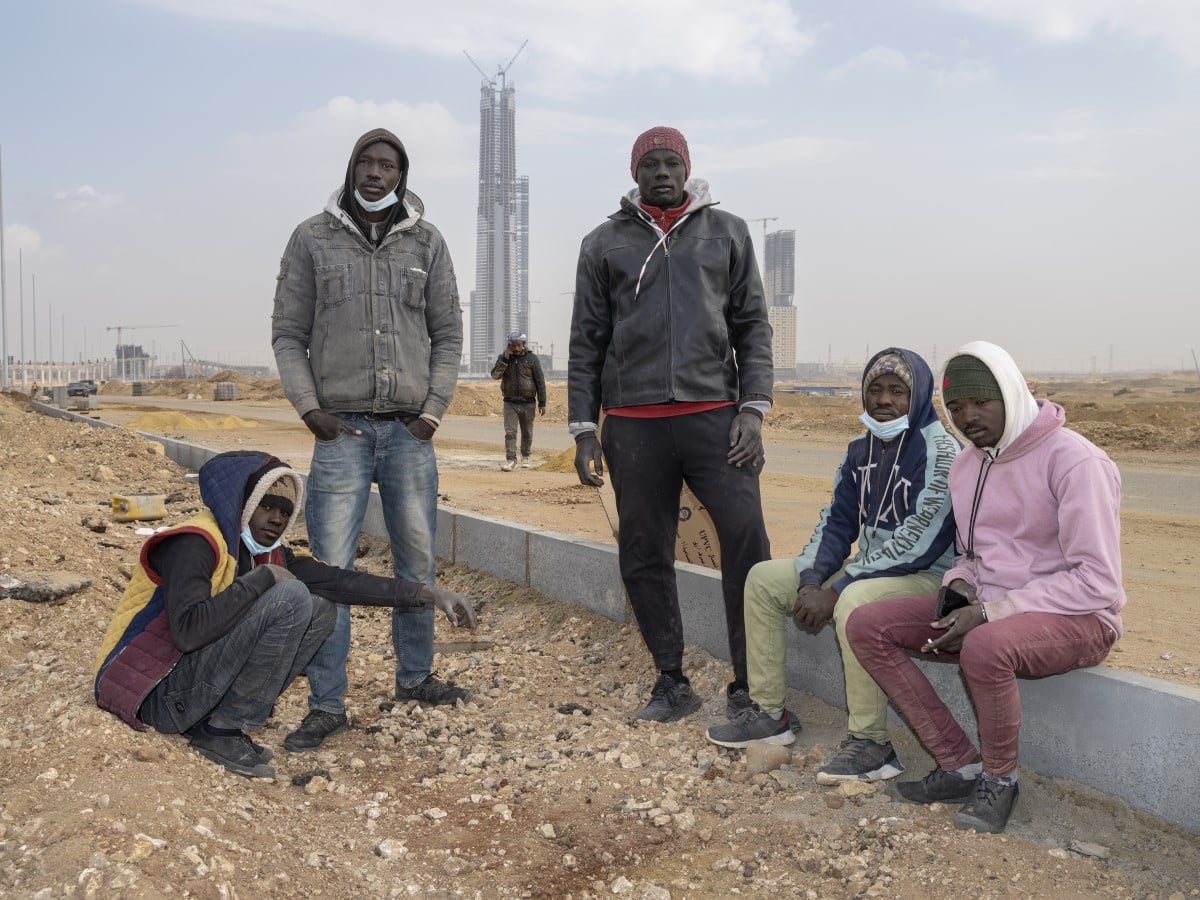
“New Capital” © Nick Hannes, Panos Pictures. Africa Stories Regional Winner.
“Mahfouz Abib, John Madesto, Angelo Saimon, Abdel Baset Omar, and Mosab Abdel Wahab (left to right), workers from South Sudan, pose in front of the Iconic Tower rising in Egypt’s New Administrative Capital (NAC) on 16 January 2022.
In 2015, the Egyptian government began constructing a New Administrative Capital (NAC) in the desert east of Cairo to accommodate ministries, top companies, and relieve chronic congestion and pollution in the city. Modeled on Dubai, this new urban environment will house 6.5 million people. Critics of the project argue that the NAC caters to the privileged minority and serves President Abdel Fattah el-Sissi’s efforts to consolidate power and establish a legacy. These images constitute part of a larger project on new capitals that addresses notions of labor, neoliberal urban development, and inequality.”
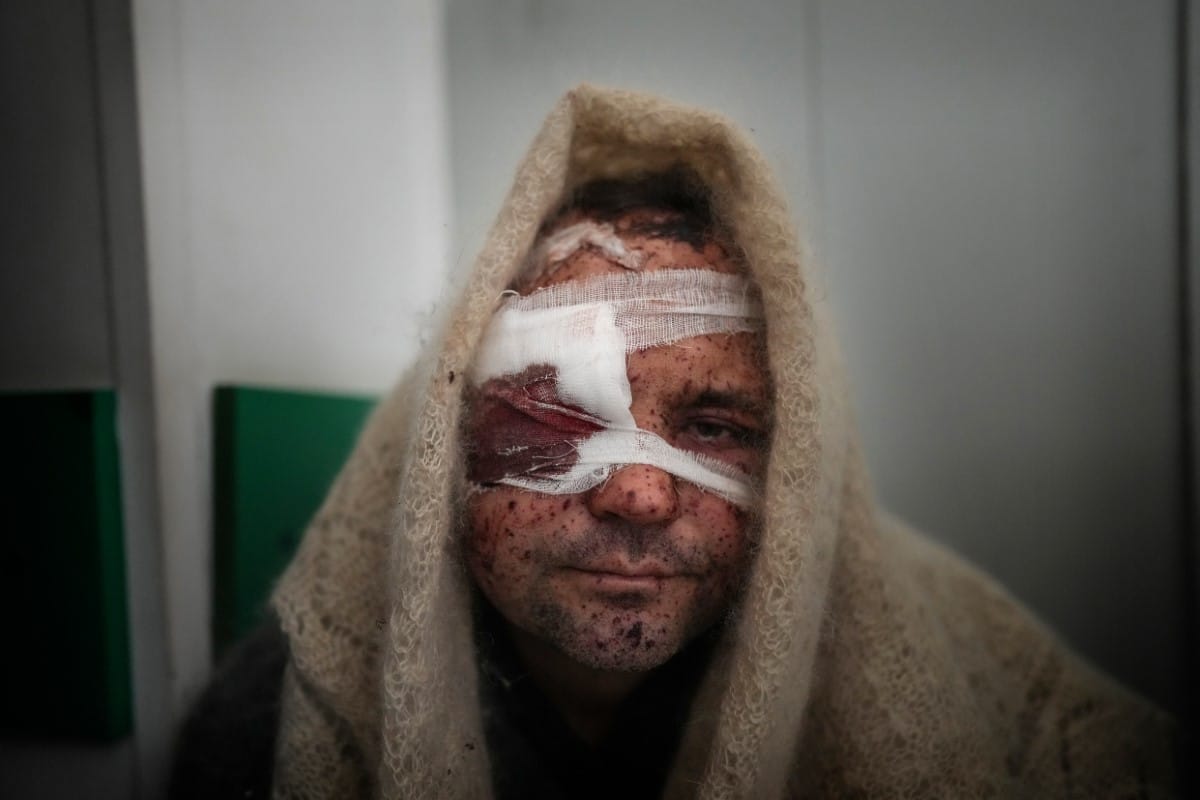
“The Siege of Mariupol” © Evgeniy Maloletka, Associated Press. Europe Stories Regional Winner.
“Serhiy Kralya, a civilian injured during shelling by Russian forces, rests after surgery at a hospital in Mariupol, Ukraine, on 11 March 2022.”

“Alpaqueros” © Alessandro Cinque, Pulitzer Center/National Geographic. South America Stories Regional Winner.
“Alina Surquislla Gomez, a third-generation alpaquera (alpaca farmer), cradles a baby alpaca on the way to her family’s summer pastures, in Oropesa, Peru, on 3 May 2021.
Vital to the livelihoods of many people in the Peruvian Andes, alpacas face new challenges due to the climate crisis. With natural pastures shrinking and glaciers retreating, these animals increasingly struggle to graze and hydrate. Alpaquero (alpaca-farmer) communities in turn may be forced to move to higher altitudes or to abandon their lifestyles. To combat these difficulties, scientists hope to address the problem by creating breeds more resistant to extremes in temperature. The jury appreciated the way the story illuminates how culture and identity are deeply intertwined with the environment.”
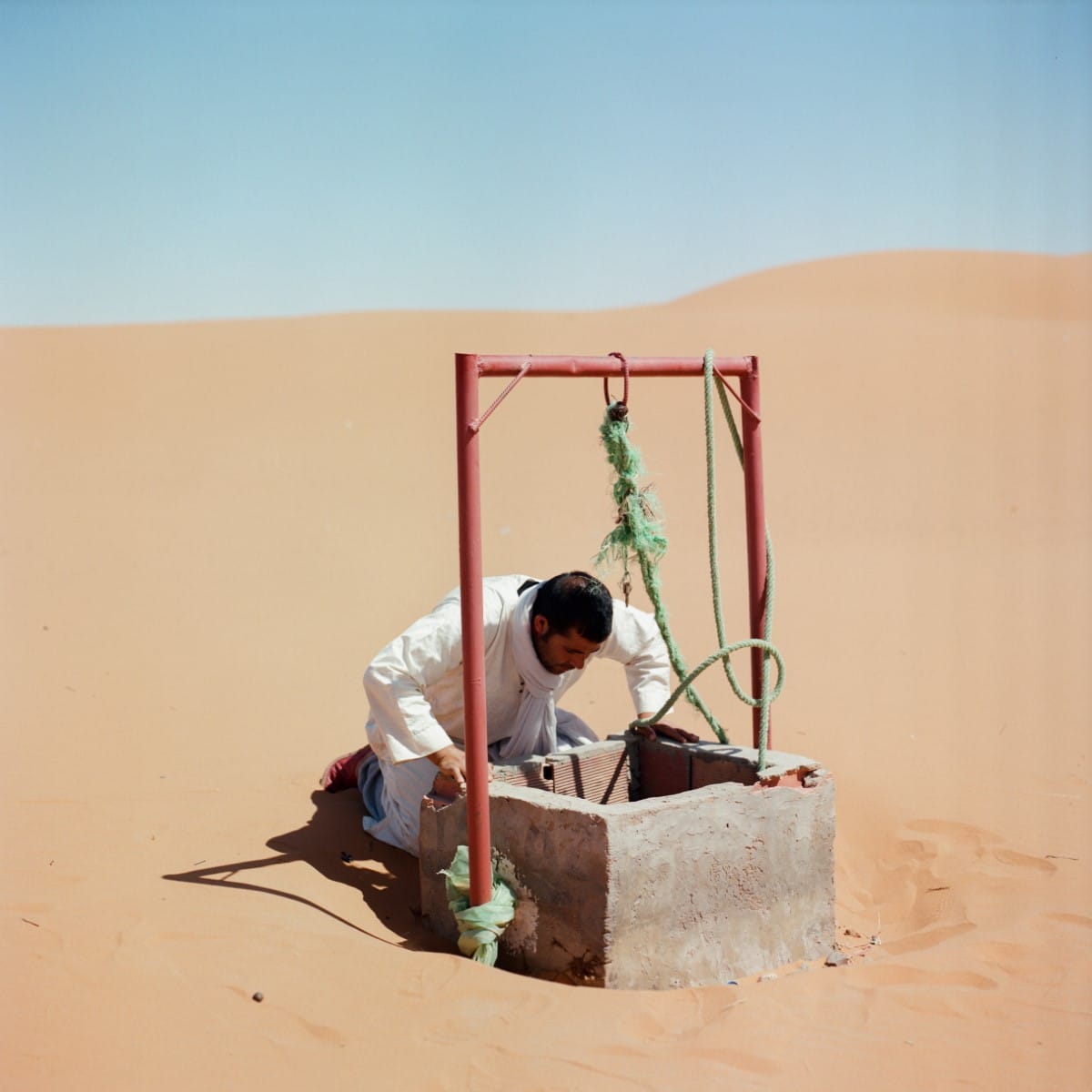
“Before It’s Gone” © M’hammed Kilito, VII Mentor Program / Visura. Africa Long-Term Projects Regional Winner.
“A man checks the water level of a well at Merzouga Oasis, Morocco, on 8 May 2022. Deep wells can deplete the water table, leaving farmers who have no access to them without a supply.
Oases depend on a delicate balance of three elements — abundant water supply, good quality soil, and date palms — to function as islands of biodiversity and barriers against desertification. In Morocco, destructive human activity and global heating are currently disrupting this ecosystem. Roughly two-thirds of Morocco’s oasis habitat has disappeared in the past century due to such factors as steadily rising temperatures, fires, and water scarcity. Oasis degradation in turn impacts inhabitants, causing decreased agricultural production, poverty, and displacement. The jury appreciated the project for its subtle study of a vanishing environment.”
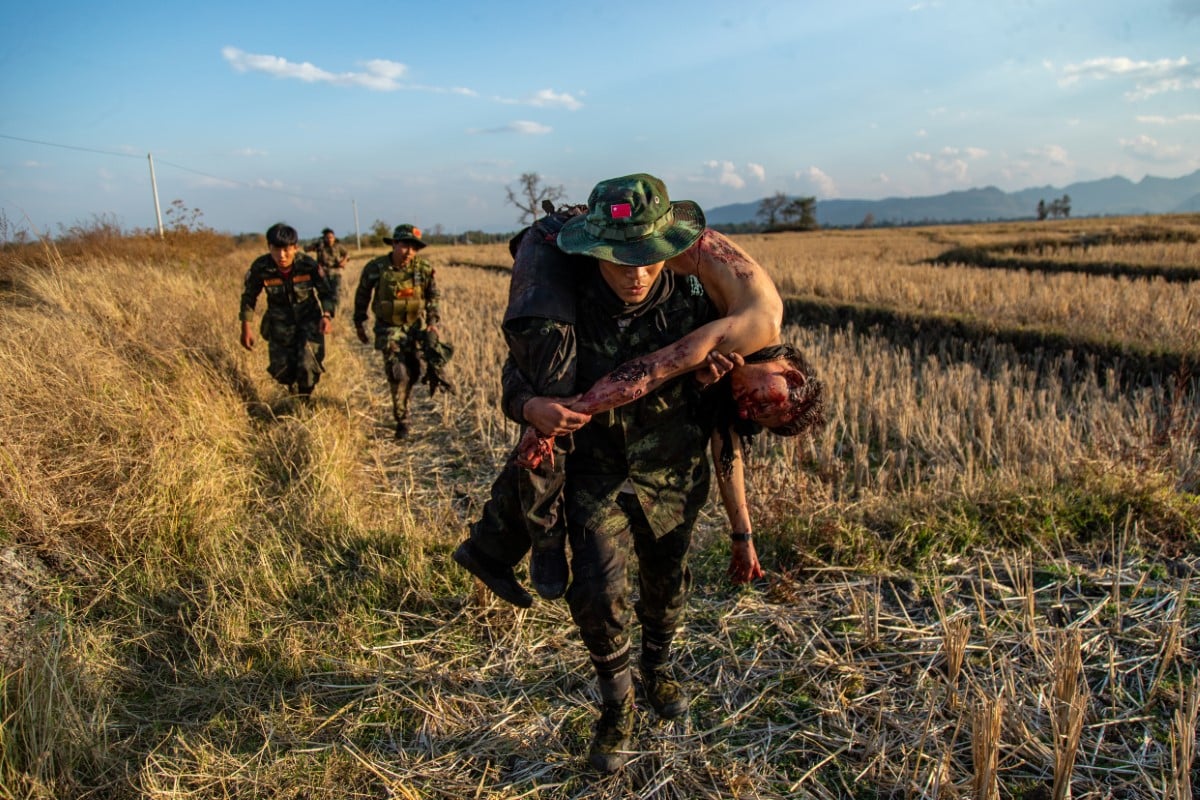
“Retrieving the Dead” © Mauk Kham Wah. Southeast Asia and Oceania Singles Regional Winner.
“Resistance fighters from the People’s Defense Forces (PDF) retreat with the body of a comrade, following a clash with the Myanmar military, in Moe Bye, Kayah (Karenni) State, Myanmar, on 21 February 2022. Myanmar authorities had sent reinforcements to the region as fighting with local opposition groups intensified.
The PDF fights alongside regional and ethnic armed groups also opposed to Myanmar’s military dictatorship. It is the armed wing of a parallel government that was formed primarily by ousted democratic lawmakers in the wake of a military coup in Myanmar in 2021. At great personal risk, the photographer spent a year with people who had joined this combined resistance movement.”

“Death of a Nation” © Kimberly dela Cruz, W. Eugene Smith Memorial Fund, VII Mentor Program. Southeast Asia and Oceania Long-Term Projects Regional Winner.
“Jazmine Durana (15) cradles her month-old daughter Hazel, on 2 February 2017, at the wake of her partner John “Toto” Dela Cruz (16), who was shot by men wearing black masks a few days earlier.
Soon after taking office in June 2016, Philippine president Rodrigo Duterte began a concerted ‘war on drugs’, repeatedly ordering attacks against suspects. A surge of extrajudicial killings followed, perpetrated not only by police but also by masked vigilantes and other civilians. Amnesty International reports that executions mostly target low-income communities. The Philippine National Police admits to more than 6,000 such deaths to date; local human rights organizations put the figure at 30,000. The photographer has been documenting the war on drugs since its outset, and the jury commended her ability to capture the continued impact on families involved.”
The World Press Photo Awards honors the best photojournalism and this year’s contest had over 60,000 images submitted.
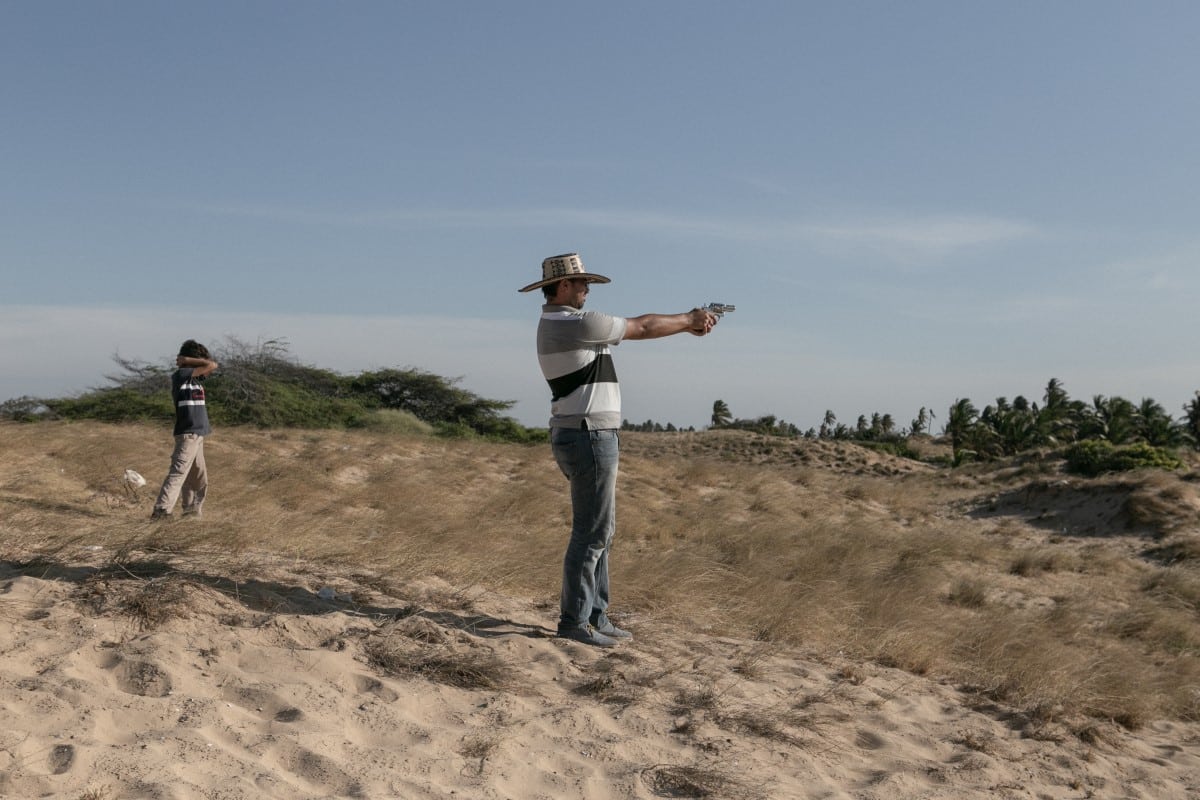
“I Can’t Hear the Birds” © Fabiola Ferrero. South America Long-Term Projects Regional Winner.
“A man fires his gun to commemorate dead relatives, in a Wayuu ritual in the Guajira Desert, on the Venezuela-Colombia border, on 26 February 2017. The Wayuu Indigenous community straddles both countries, and doesn’t recognize the border.
Seven million Venezuelans have left their country to live abroad, driven by economic collapse, political unrest, high unemployment, and extreme social inequality. Around the turn of the millennium, oil-rich Venezuela was prosperous, but its fortunes declined following plummeting oil prices, later economic mismanagement, and political instability. Young people, especially, began to leave. The photographer was one, but she returns to search for traces of the Venezuela of her memory. Her project combines images of migration and past political violence with those of present-day Venezuela, of the decay and the resilience of people living within it.”
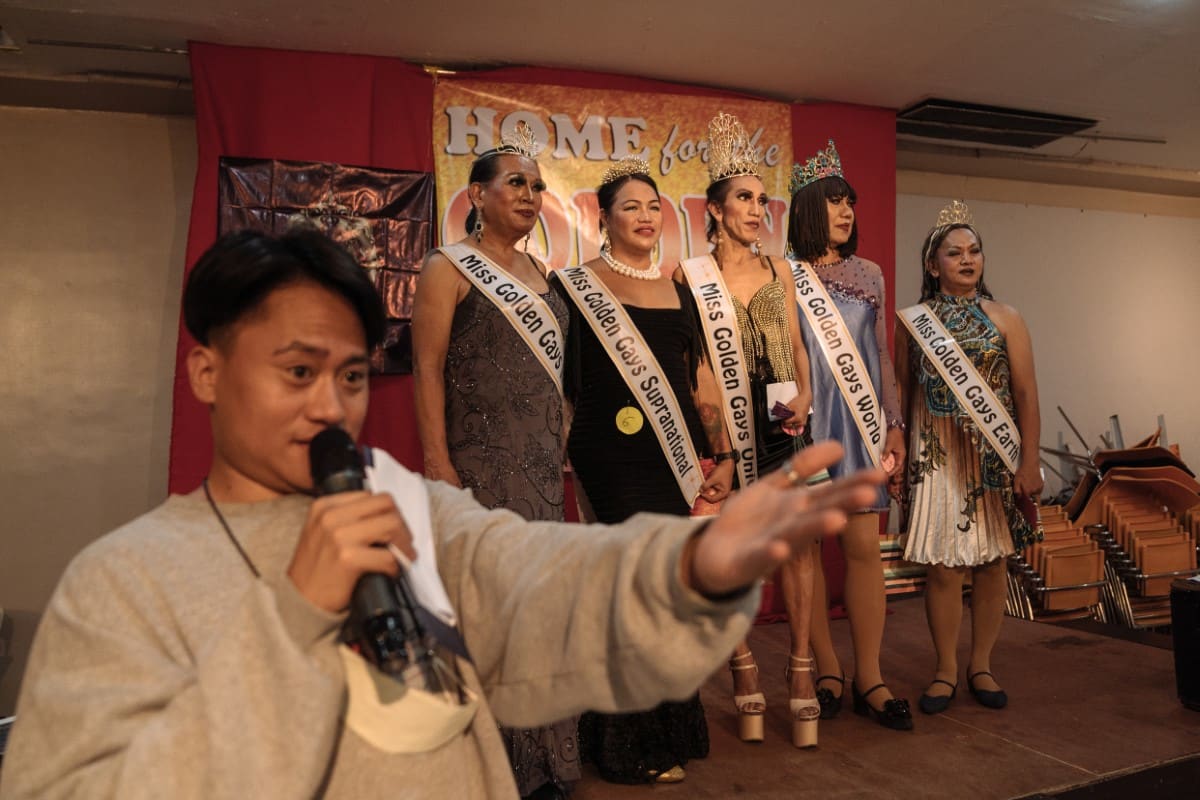
“Home for the Golden Gays” © Hannah Reyes Morales, for The New York Times. Southeast Asia and Oceania Stories Regional Winner.
“Members of the Golden Gays perform in a talent and beauty pageant at a shopping mall in Manila, on 24 July 2022.
The Golden Gays are a community of older LGBTQI+ people from the Philippines who have lived together for decades and support each other. In a country where they face discrimination, prejudice, and challenges amplified by their age and socioeconomic class, the group came together and made a home, sharing care responsibilities and staging shows and pageants to make ends meet. When their founder died in 2012, the community were evicted and some experienced homelessness until 2018, when they began renting a house in Manila. The jury commended this story for portraying the warmth, joy, and dignity of the community.”
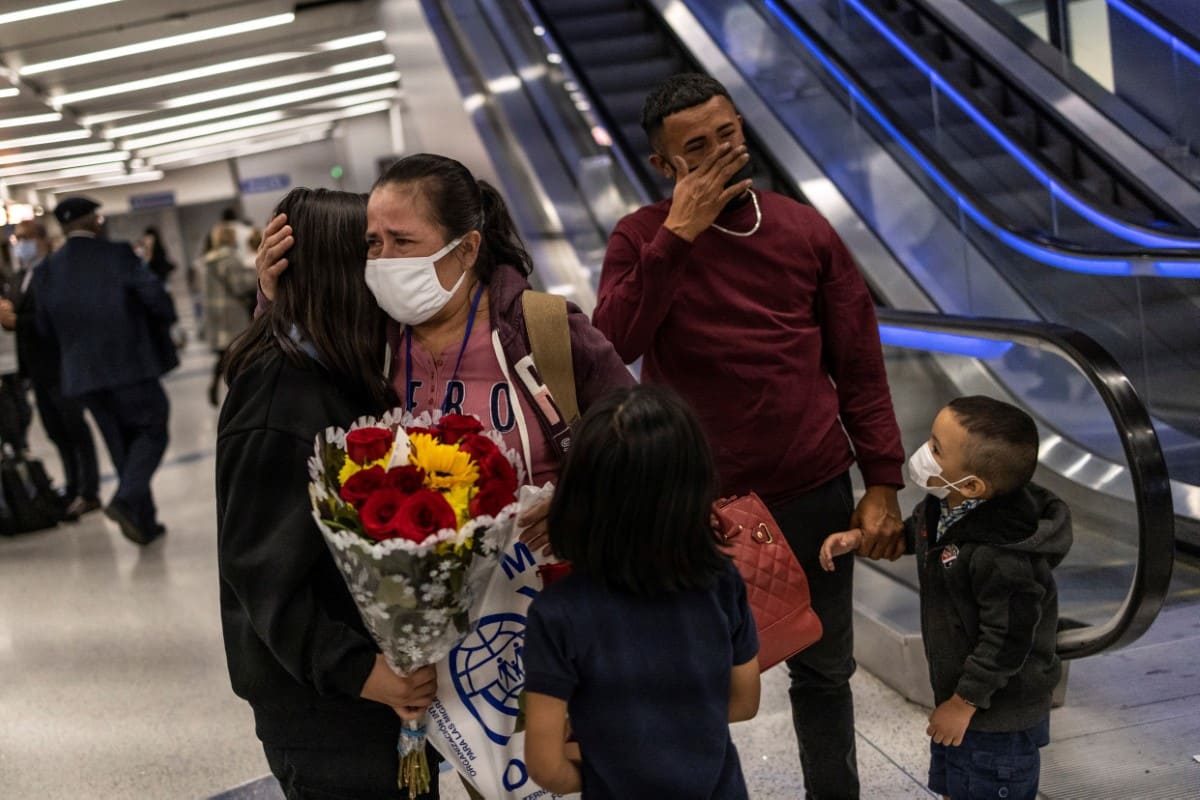
“Maria’s Journey” © Carlos Barria, Reuters. North and Central America Stories Regional Winner.
“Maria Hernandez hugs her daughter Michelle, while her son Maynor is overcome with emotion, during their family reunion at Los Angeles International Airport, on 11 January 2022.
Upon arriving in the United States from Honduras in 2017 in search of asylum, Maria Hernandez and her two daughters, aged eight and three, were apprehended. Border authorities deported Maria, but her children remained behind. At first, they stayed in a children’s shelter; later, they went to live with Maria’s adult son, who was already in the US. In 2022, Maria returned under an asylum program, and was reunited with her family in Los Angeles, California. The jury appreciated how this story visualizes the complications that immigrants often encounter when assimilating in a new country.”

“Shireen Abu Akleh’s Funeral” © Maya Levin, Associated Press. Asia Singles Regional Winner.
“Israeli police beat mourners accompanying the coffin of Al Jazeera journalist Shireen Abu Akleh to her funeral, in East Jerusalem, on 13 May 2022. Police prohibited people from carrying the coffin on foot through the city, which is customary for notable deaths, as mourners chanted ‘We sacrifice our soul and blood for you, Shireen’.
Abu Akleh, a veteran reporter of the Palestinian-Israeli conflict, was shot two days earlier while covering an Israeli military raid in Jenin, West Bank. Another journalist was wounded at the scene. After initial denials, the Israeli military has since admitted there was a “high possibility” Abu Akleh was shot by an Israeli soldier.”
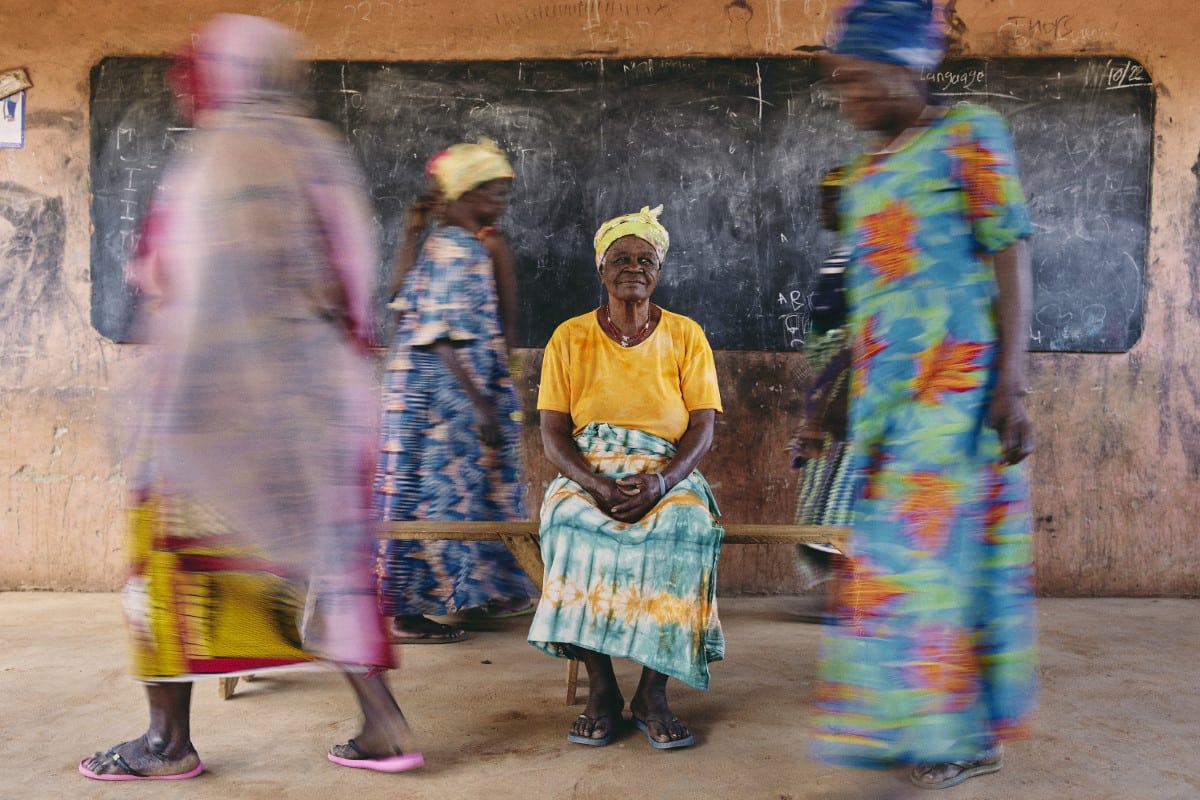
“The Big Forget” © Lee-Ann Olwage, Bob & Diane Fund, for Der Spiegel. Africa Singles Regional Winner.
“Sugri Zenabu, a mangazia (female community leader) of the Gambaga “witch camp”, sits encircled by residents in Gambaga, Ghana, on 27 October 2022. Zenabu shows some signs of confusion and memory loss associated with dementia.
As life expectancy rises, dementia is increasingly becoming a public health and socio-cultural issue in Ghana and across Africa. Lack of public awareness of behavior associated with the condition means that women displaying symptoms are sometimes perceived as witches. In Ghana, they may be sent away to live in so-called “witch camps”. Lee-Ann Olwage’s personal project attempts to bring attention to often overlooked stories about dementia from the African continent.”
All of the winning photographs will be part of a traveling exhibition that will be on view in over 60 cities around the world.
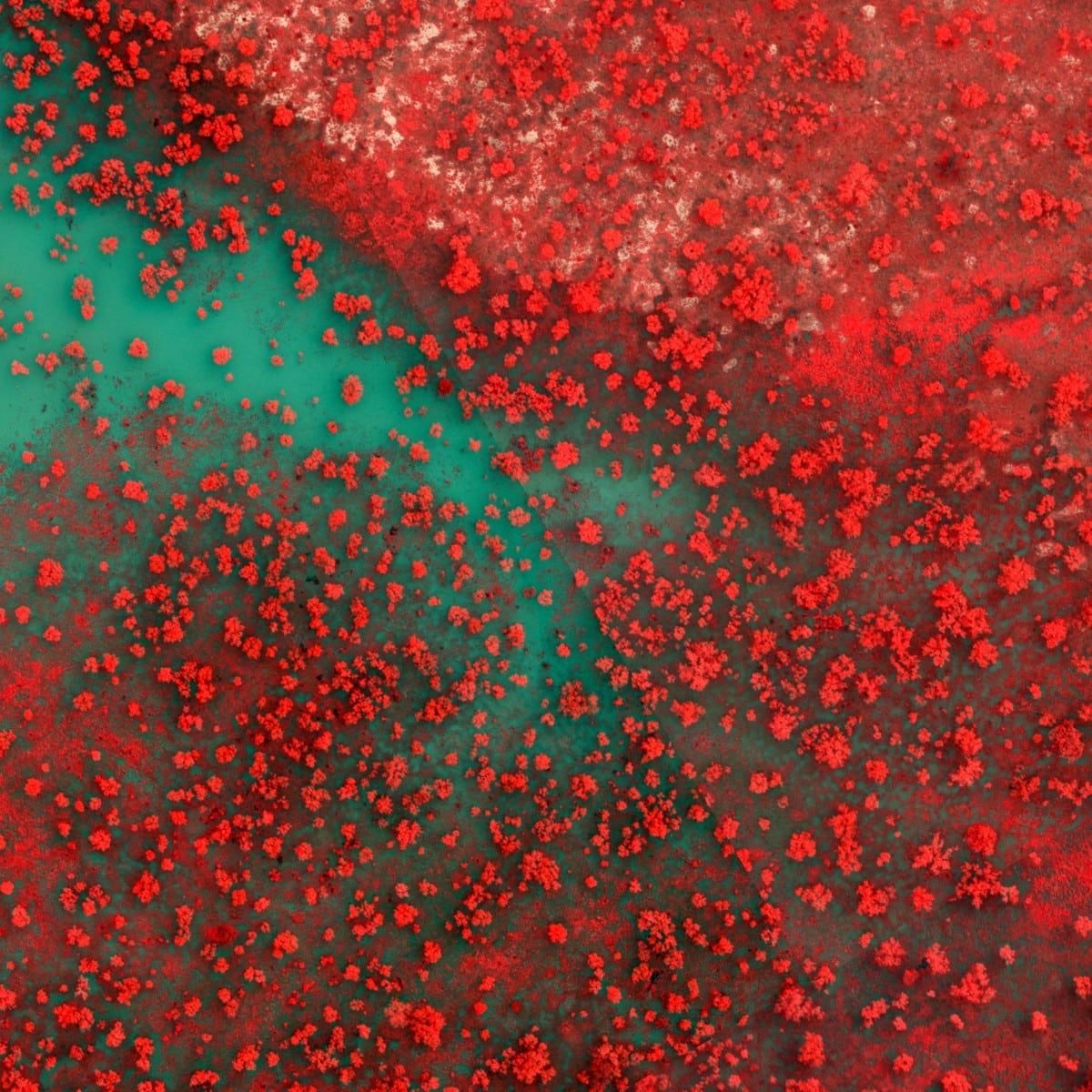
“Australian Floods in Infrared” © Chad Ajamian. Southeast Asia and Oceania Open Format Regional Winner.
“A flooded forest in Mungindi, New South Wales, on 19 April 2021. This area forms a natural basin, which can further isolate remote communities for weeks at a time, requiring emergency air supplies of food and medicine.
This series offers a unique perspective on the recent floods that have devastated areas in New South Wales, Australia. Aerial infrared imaging renders vegetation in pinks and reds, contrasting sharply against blues and cyans, which represent water. These images make newly flooded areas easily discernible to post-disaster emergency responders, assisting with response and recovery. The photos in this series were taken during the rounds of devastating floods in New South Wales, Australia, which forced the evacuation of 18,000 people in March 2021. The increased intensity and frequency of flooding in the region is likely an outcome of the global climate crisis.
The project contains adaptations from raw data in NSW Flood Imagery Viewer by DCS Spatial Services, State of New South Wales, licenced under CC BY 4.”
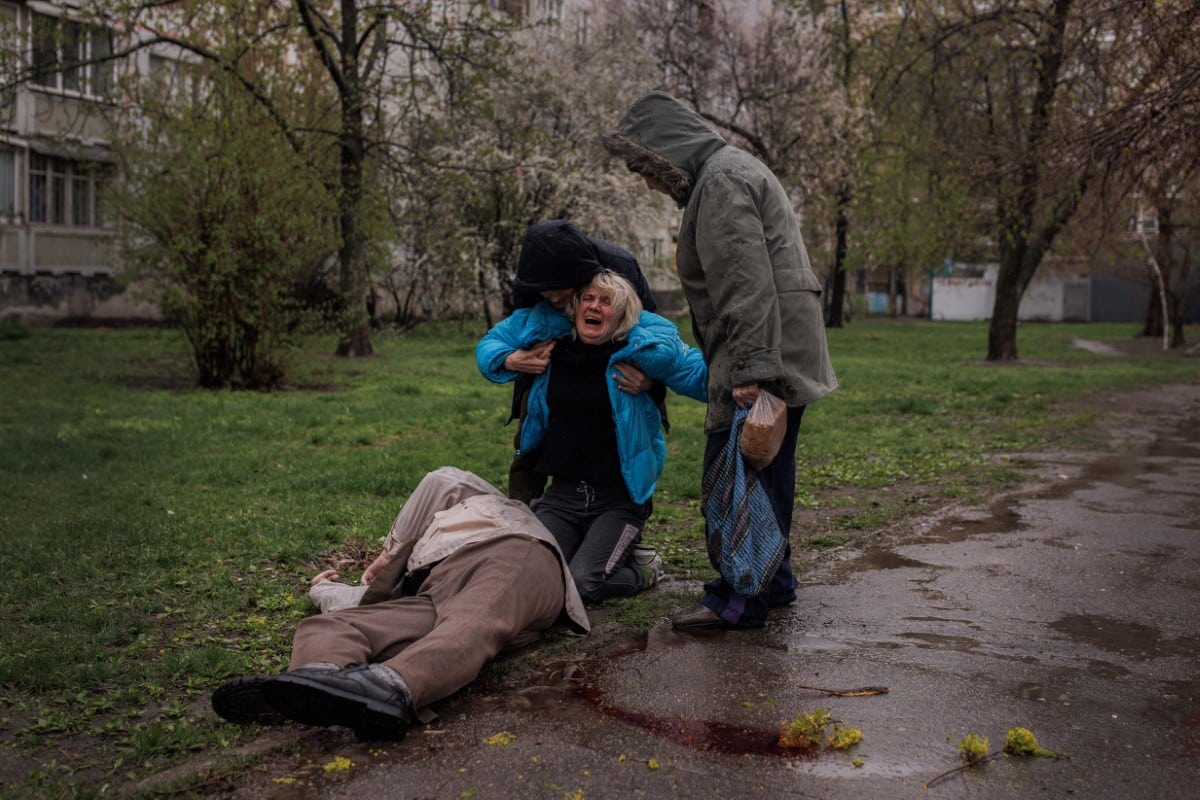
“Yana and Victor” © Alkis Konstantinidis, Reuters. Europe Singles Regional Winner.
“Consoled by her partner Yevgeniy Vlasenko and her mother Lyubov, Yana Bachek cries over the body of her father Victor Gubarev (79), killed while buying bread during the shelling of Kharkiv, Ukraine, on 18 April 2022.
Russian forces began advancing towards Kharkiv, Ukraine’s second-largest city, just after their full-scale invasion on 24 February. Throughout March and April, the city was partially encircled and remained under heavy shelling. In May, Ukraine forced a Russian withdrawal from the immediate surroundings of Kharkiv. The jury felt this image encapsulated the grief and horror that Ukrainian civilians endure on a daily basis since Russia’s invasion.”
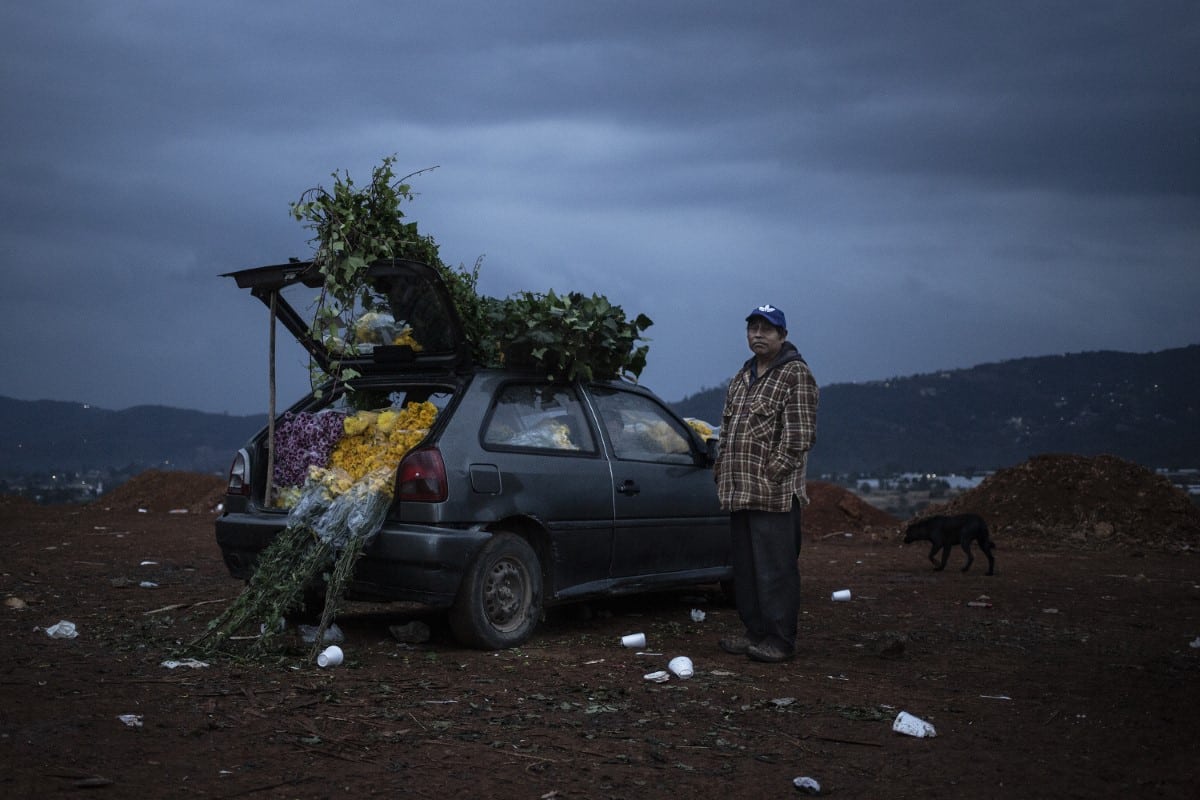
“Beautiful Poison” © Cristopher Rogel Blanquet, Mexico, W. Eugene Smith Grant/National System of Art Creators FONCA/Getty Images. North and Central America Long-Term Project Regional Winner.
“A man sells flowers from his car at the Villa Guerrero flower market, Mexico, on 16 May 2021. Most flowers sold at the market are shipped around the country or exported.
The EU, China, the US, and other countries that have banned certain agrichemicals due to health and environmental risks still sometimes legally sell these substances to countries where labor is cheap and then import the products grown abroad. Although the Mexican government has begun to take steps against such double standards, some toxic pesticides remain on the market, and guidelines for their use are not always enforced. The photographer sought to document flower-growing families in Villa Guerrero in order to raise awareness of the environmental and human impact of agrichemicals in the Mexican flower belt and portray the authorities’ neglect of healthcare in the region, as well as to call attention to consumers’ responsibilities when buying flowers.”
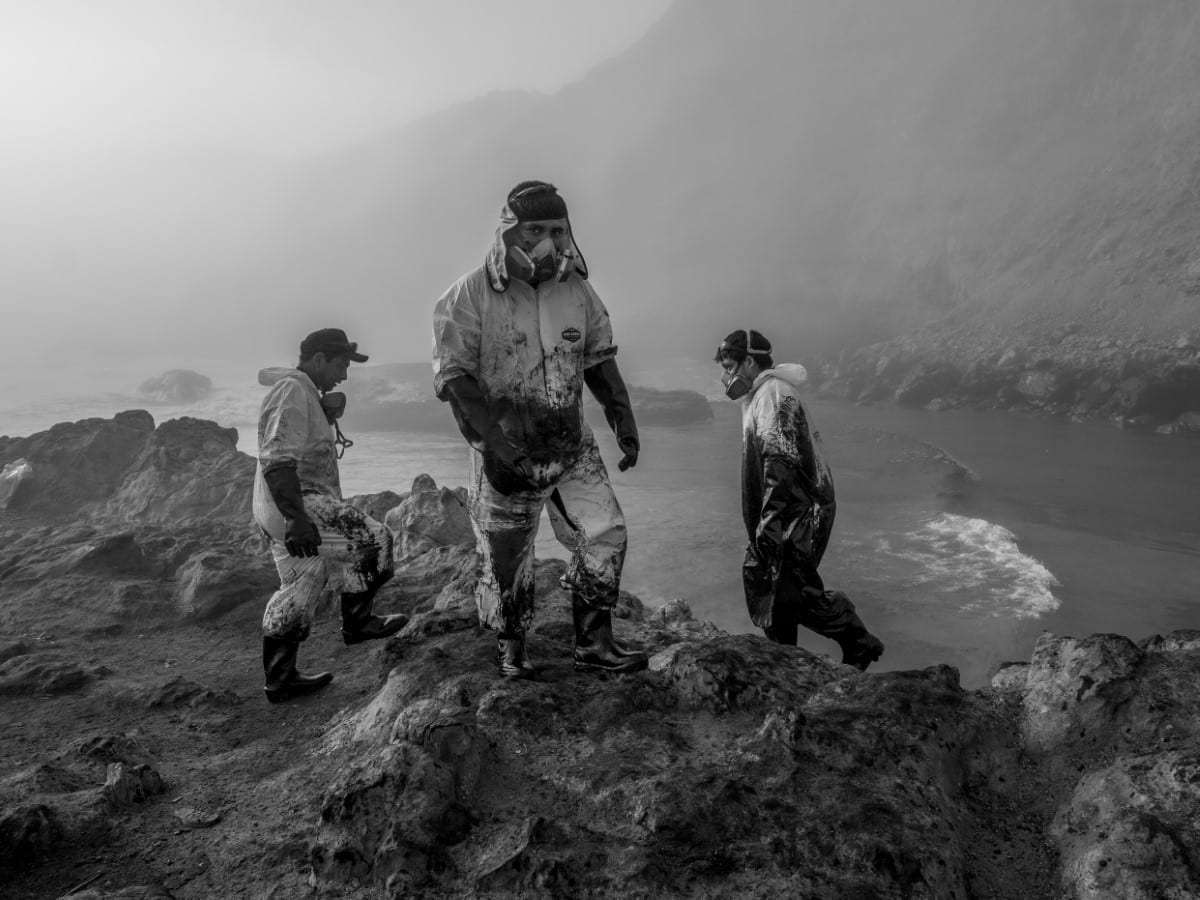
“Oil Spill in Lima” © Musuk Nolte, Bertha Foundation. South America Singles Regional Winner.
“Workers deal with the environmental disaster caused by an oil spill at Repsol’s nearby La Pampilla refinery at Playa Cavero, Peru, on 21 January 2022.
On 15 January, nearly 12,000 barrels of crude oil spilled into the sea while a tanker was unloading at the Spanish transnational oil company’s refinery. The spill extended over 7.13 square kilometers, polluting beaches, killing wildlife, and impacting livelihoods, in what the Peruvian government termed the country’s worst ecological disaster in recent memory. UN experts believe its effects will last up to ten years. The jury felt the photo communicated the devastating ecological impacts of oil extraction in the region with subtlety and clarity.”

“Shifting” © Johanna Alarcón, Magnum Foundation/Panos Pictures. South America Open Format Regional Winner.
“Valentina is a 13-year-old who aspires to become a photographer and whose mother is in prison for marijuana possession. Ecuador’s ongoing prison crisis and punitive drug sentencing policy means that the separation between parents and children has been especially harrowing. The video and imagery in this multimedia project center around the imagination and experiences of Valentina as a young artist, whose rich inner world is not defined by her mother’s incarceration, even as she awaits their reunion.
Ecuador-based visual storyteller and photojournalist Johanna Alarcón became acquainted with Valentina and her mother while Alarcón was working with prisoners on artistic projects. Members of her own family have been incarcerated. Alarcón’s deep personal connection to the subject makes possible this complex, collaborative, and multi-dimensional representation of Valentina’s life story. The combination of analog and digital photography with video, animation, and audio gives a special look into the inner life of a young artist making sense of the world through her photography.”

“The Voice of New York Is Drill” © Ashley Peña, United States, for New York Magazine. North and Central America Open Format Regional Winner.
“Kenzo B (18) is one of the few young up-and-coming women artists in the Brooklyn drill scene. Although there have been a number of women artists, drill artists have been predominantly men. The Bronx, New York, on 4 August 2022.
Drill, a musical genre that originated in Chicago, United States, may be the most recent wave of rap music to achieve massive global success, but its story is not new to hip-hop. Even as their hit songs top charts, New York drill artists are targeted by New York City Police Department (NYPD) investigators who comb their lyrics and music videos for evidence of gang-related crimes. Concerts are shut down and artists face indictments, all while success brings rivalry and jealousy among peers out on the streets. This series offers an intimate look at several members of this new generation of young men and women drill artists striving to realize their dreams.”
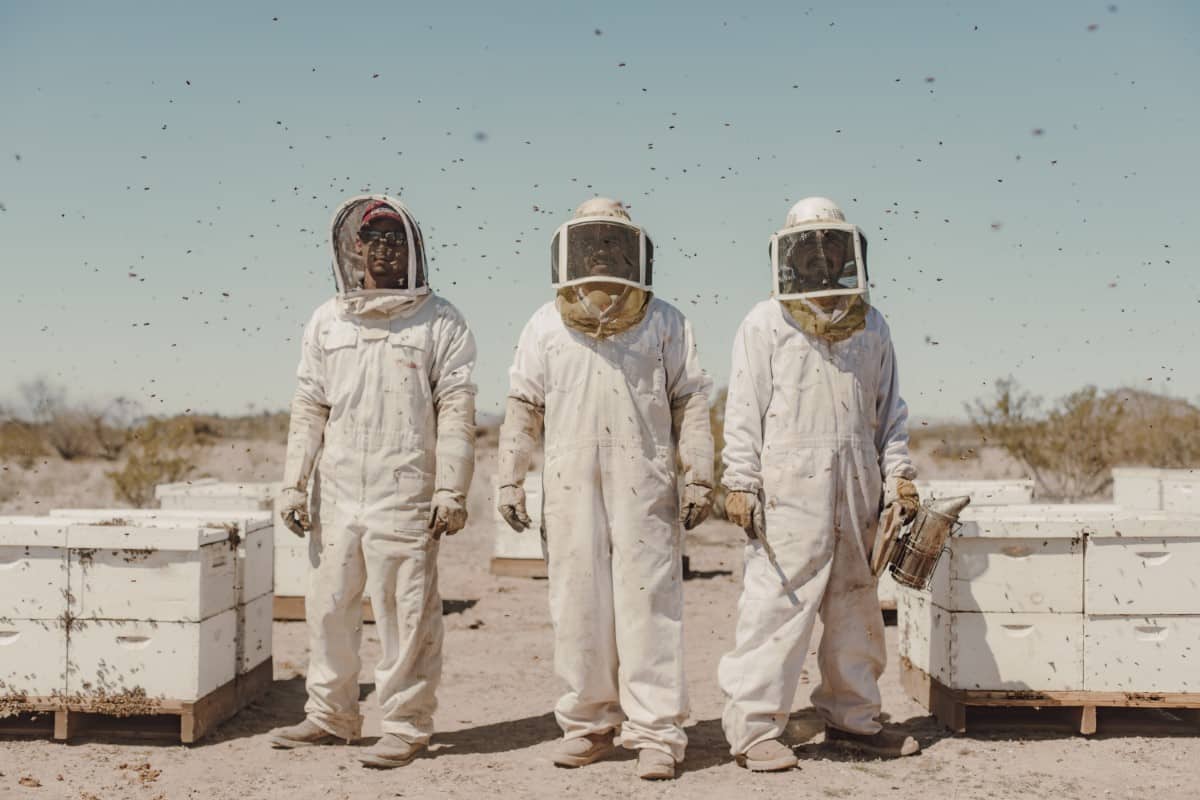
“The Dying River” © Jonas Kakó, Panos Pictures. North and Central America Singles Regional Winner.
“Alfredo, Ubaldo, and José tend beehives near Wenden in the Arizona desert, United States, on 11 March 2022.
A substantial decrease in flow of the Colorado River, caused by lack of rain and increasing demand for water upstream, now requires these workers to provide water for the bees in troughs. Heat and drought weakens bees, making them more susceptible to pathogens and parasites, and impacts the plants from which they feed.
Between 2019 and 2020, colonies of bees—vital for pollinating crops—declined by 43.7 percent across the US. The jury felt this understated portrait invites reflection on an environmental issue that resonates at a global level.”
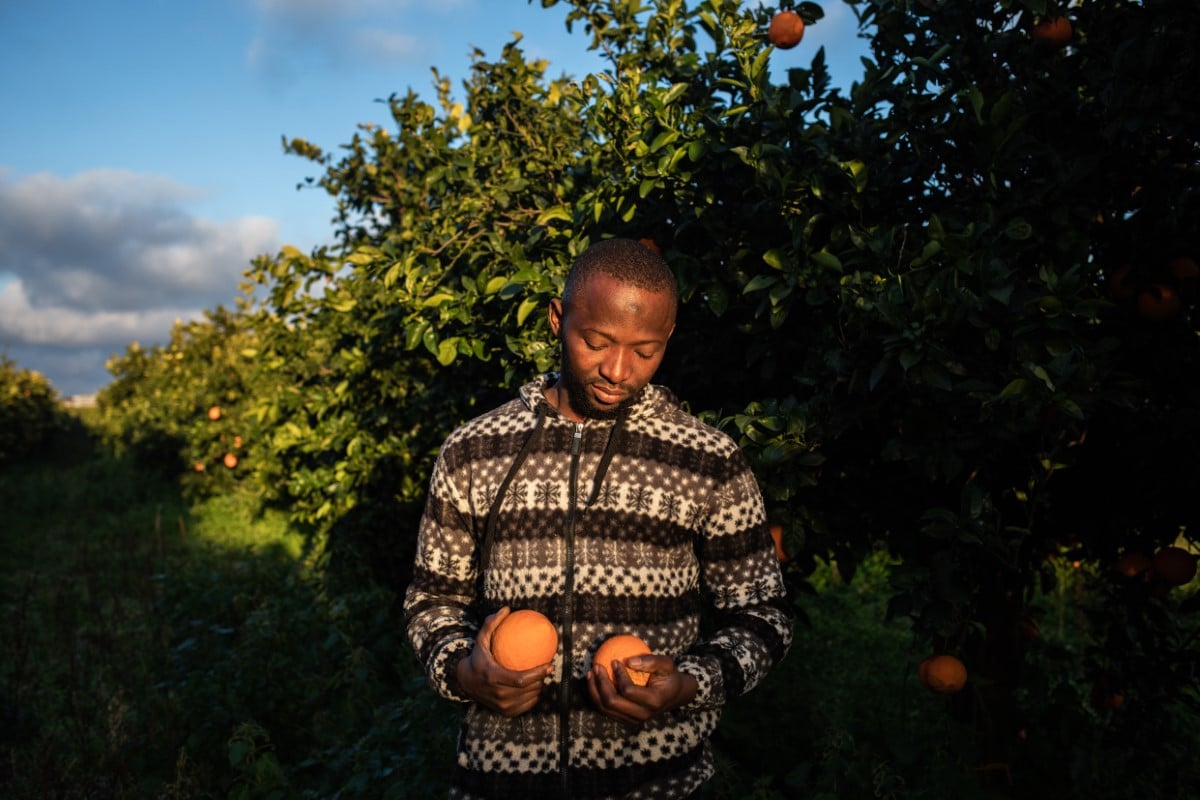
“Passengers” © Cesar Dezfuli, for De Volkskrant. Europe Open Format Regional Winner.
“Alpha Oumar was granted a residence permit by Italian authorities and found a job picking fruit in Palagiano, Italy. He dreams of reuniting with his wife in Italy and pursuing further studies in literature.
Since 2015, the influx of migrants, refugees, and asylum seekers from Africa to Europe has been covered in European news media as either a series of humanitarian crises or as a set of abstract statistics. On 1 August 2016, a boat carrying 118 people was found drifting off the coast of Libya, one of hundreds that required rescue in the past years. What happened to these individuals after their arrival in Europe? The Passengers project, presented as a multimedia website for De Volkskrant, highlights several personal stories from the people who were on that boat in 2016 as they seek to establish new lives across the continent.”
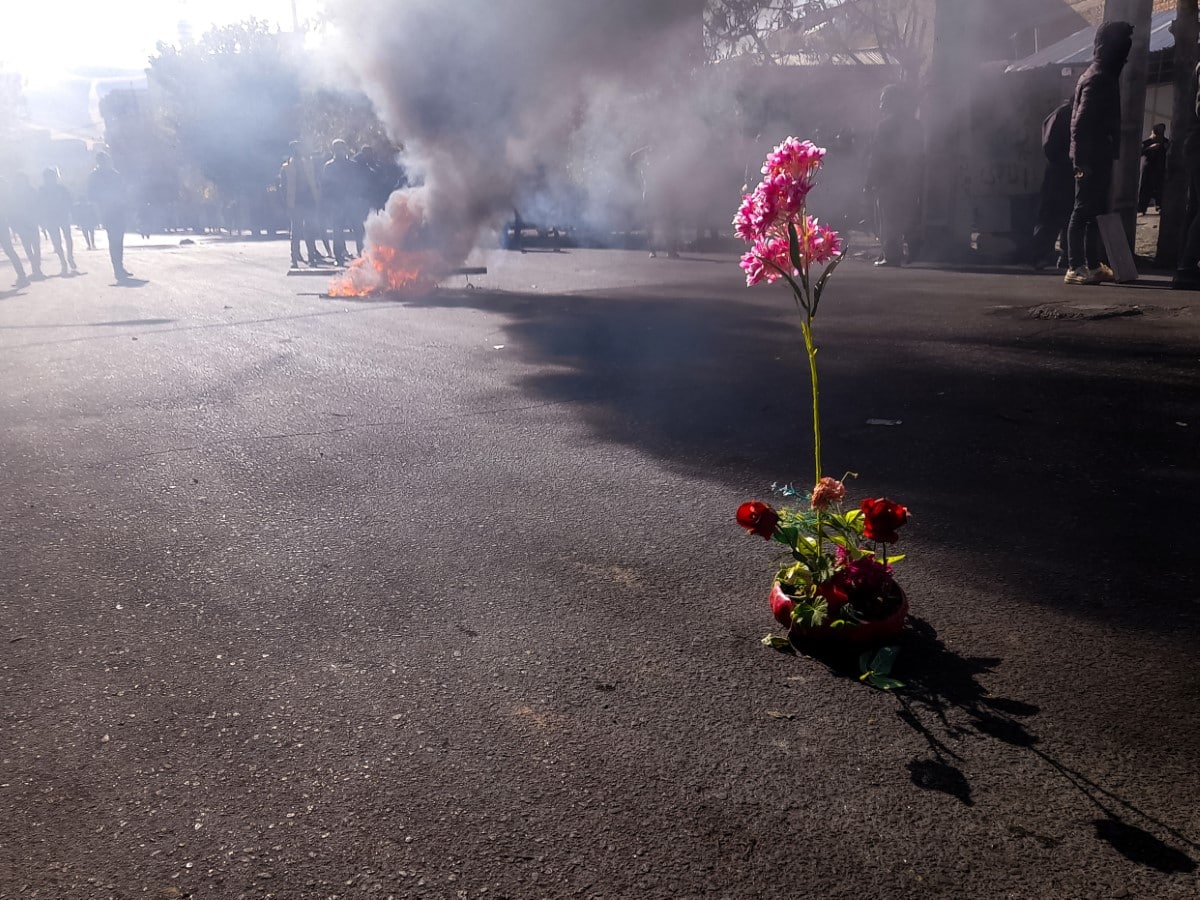
“Woman, Life, Freedom” © Anonymous. Asia Open Format Regional Winner.
“This photo-based video project narrates one chaotic night in the life of an Iranian nurse as she saves the life of a young protester named Reza. The footage offers a rare glimpse into the dangers faced by protestors on the streets of Iran today, situated in the context of an inciting incident: on 16 September 2022, Mahsa “Jina” Amini, a 22-year-old Kurdish woman, died after she was arrested by the Islamic Republic’s morality police for allegedly violating the country’s strict rules restricting the dress and conduct of women. The ensuing protests quickly intensified, spreading across the country. The Islamic Republic responded by disrupting internet access and violently repressing uprisings. Because hospitals are controlled by the regime, anyone injured in the protests risks arrest and further abuse upon seeking medical attention.
Hossein Fatemi is an Iranian photographer who encountered the nurse in the video while providing support to local Iranian photographers covering the protests. Images and video for this project were captured by local photojournalists, the nurse herself, and a photographer on assignment to cover her story.
Journalists and photographers attempting to report on the protests face reprisals from the Iranian regime, ranging from intimidation to arrest and violent abuse. Due to these efforts, it is difficult to know what is really happening inside the country. The photographers who captured the images seen here remain anonymous for security reasons.”

” Net-Zero Transition” © Simone Tramonte. Europe Long-Term Projects Regional Winner.
“Kristinn Haflidason monitors a photobioreactor at a microalgae production facility in Hellisheiði, Iceland, on 14 July 2020. The company cultivates omega 3-rich algae using waste and geothermal power.
Renewable energies, new technologies for food production, and the circular economy can be seen as key directions among European companies seeking a green transition. Human-induced climate change is the largest, most pervasive threat to the natural environment and society that the world has ever experienced, according to the OCHR. This prompted the European Union to establish targets to cut greenhouse emissions by at least 55 percent by 2030 and to reduce them to net-zero by 2050. The photographer documents innovative technologies that offer possible routes to these goals.”
World Press Photo: Website | Instagram | Facebook
